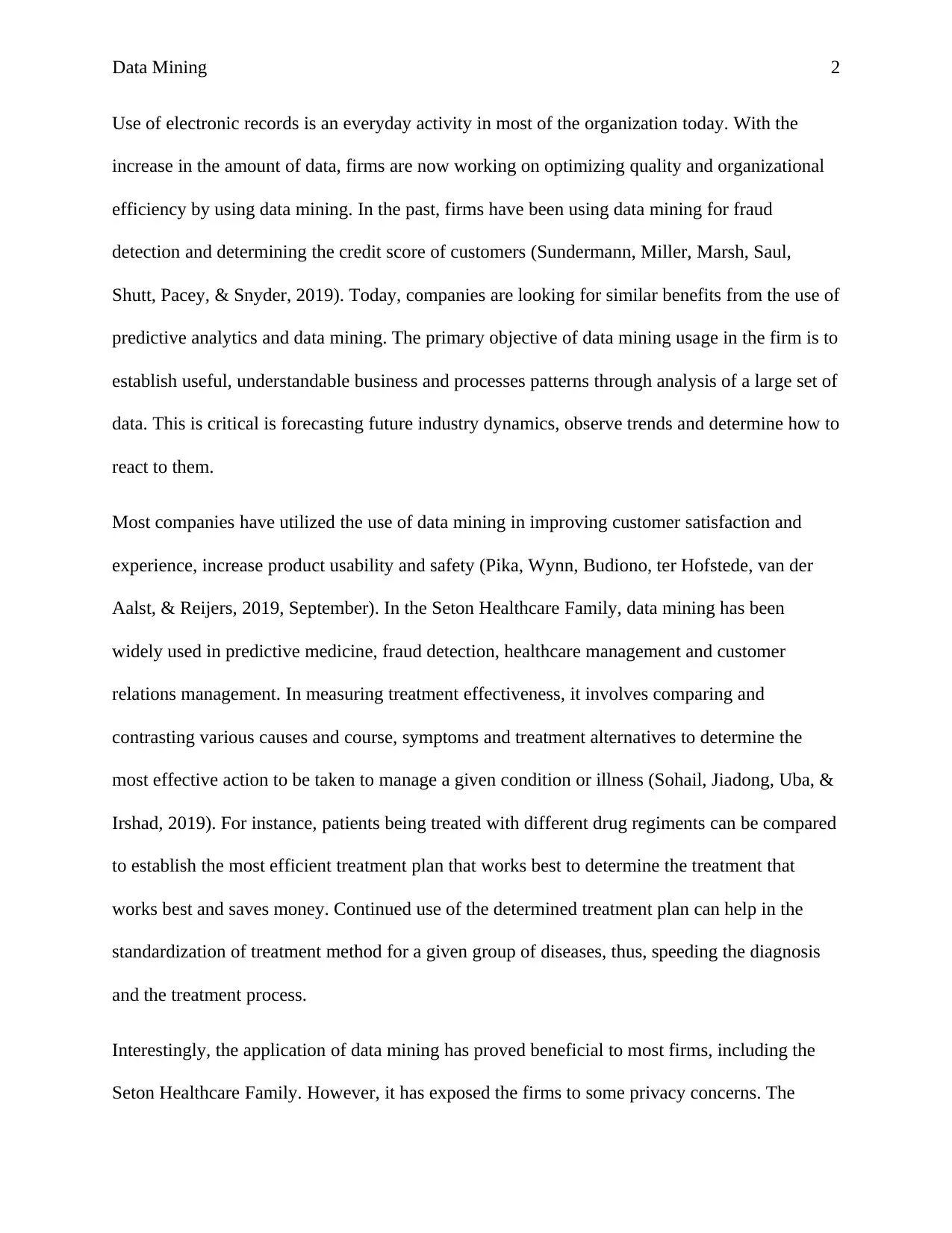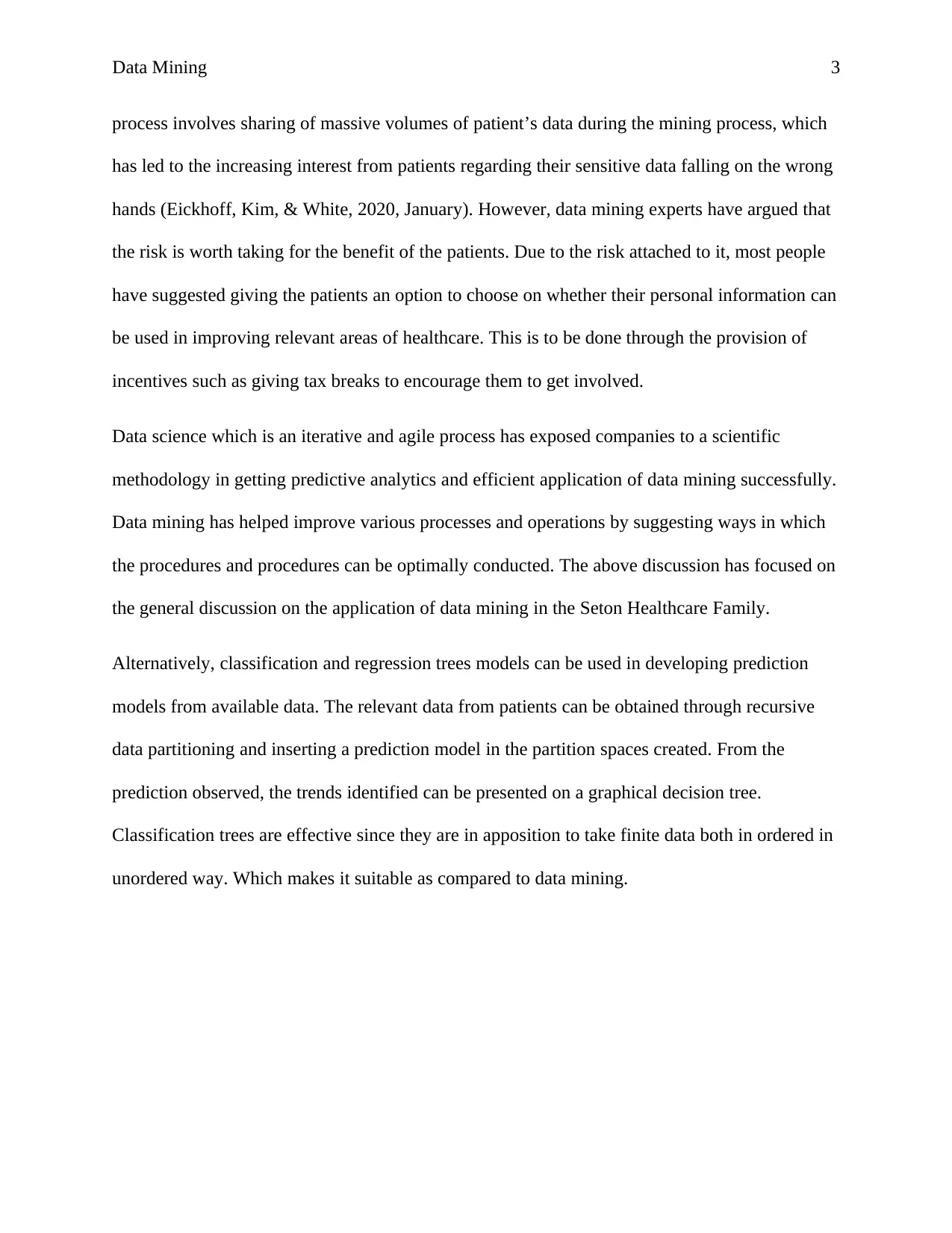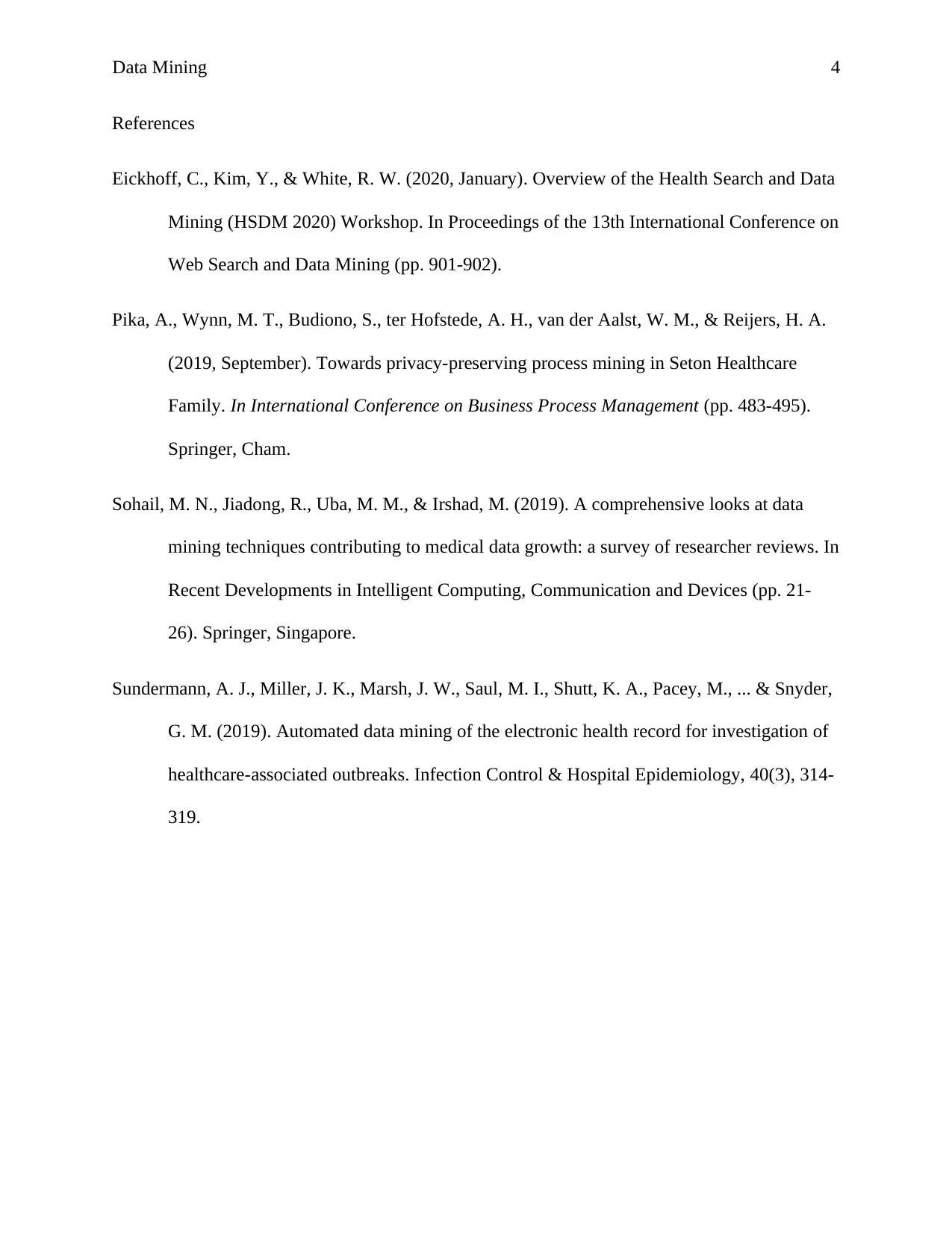Data Mining in Healthcare: Predictive Analytics and Privacy Concerns
VerifiedAdded on 2022/09/14
|4
|896
|14
Discussion Board Post
AI Summary
This discussion post examines the application of data mining in the healthcare sector, particularly within the Seton Healthcare Family. It highlights the use of data mining in predictive medicine, fraud detection, healthcare management, and customer relations management. The post discusses how data mining helps in measuring treatment effectiveness by comparing different treatments and establishing the most efficient treatment plans. It also explores the use of classification and regression trees in developing prediction models. The post acknowledges the benefits of data mining, such as improving patient care and standardizing treatment methods, while also addressing the privacy concerns associated with the sharing of patient data and suggests solutions such as giving patients the option to choose whether their personal information can be used for healthcare improvement and offering incentives to encourage participation.
1 out of 4











![[object Object]](/_next/static/media/star-bottom.7253800d.svg)